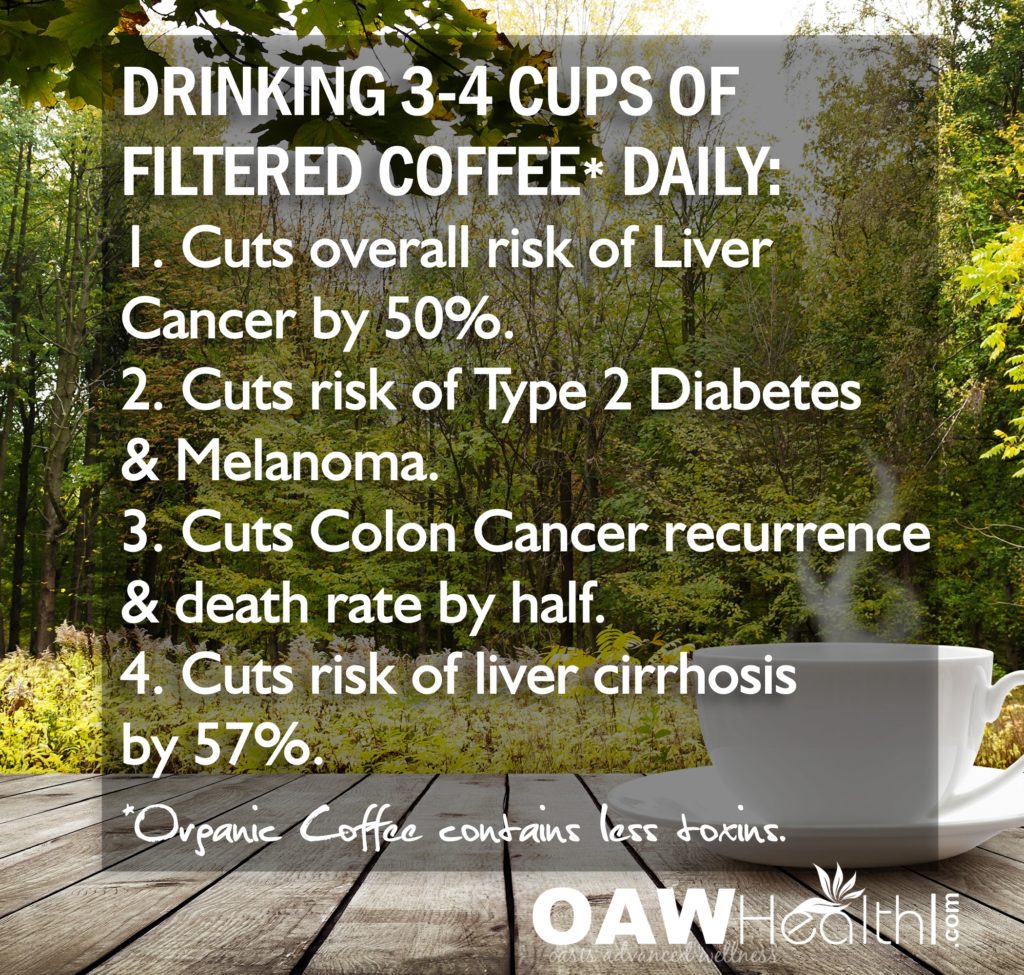Over half of all Americans – a whopping 62 percent – drink coffee every day, up from 57 percent in 2016. Coffee drinking has long been viewed as an acquired habit, with the main benefit being a quick energy boost to help one wake up and get through the day. Fortunately, this view is now shifting toward the actual great health benefits of coffee as they continue to be uncovered. With all these health benefits and more, this KETO organic coffee recipe is a hit with even the most discerning coffee connoisseur.
Just a quick reminder. Be sure to keep in mind that coffee beans are one of the most heavy pesticide sprayed crops in the world. So if you are drinking even just one daily cup of coffee, be sure to purchase organic coffee.
8 Health Benefits of Daily Coffee
- Increases Colon Cancer Survival.
- Coffee is connected to a lower risk of type 2 diabetes.
- Two cups of coffee per day was associated with a 43 percent reduced risk of liver cancer.
- Coffee may significantly cut the risk of Parkinson’s disease.
- Unknown ingredient in coffee interacts with caffeine to help protect you from Alzheimer’s disease.
- Drinking coffee is associated with less severe liver fibrosis, lower levels of fat in the liver, and lower rates of hepatitis-C disease progression.
- Coffee produces an increase in the metabolic activity and numbers of Bifidobacterium, which are very beneficial bacteria in the gut.
- Strong evidence that coffee can help stabilize your blood glucose level and may even help curb sugar cravings.
4 Health Tips for Drinking Keto Organic Coffee
To get the many therapeutic benefits from drinking coffee, consider the following.
- Always Choose Organic. Coffee beans are one of the most heavily sprayed crops with pesticides. Choose coffee beans that are certified organic. You will eliminate the many positive effects coffee can provide if you drink coffee that’s been drenched in pesticides or other toxic chemicals.
- Purchase Whole Beans. Purchase whole bean coffee that smells and tastes fresh. If there is not a pleasant aroma, it is probably rancid. Take time to grind the coffee yourself to prevent rancidity. Coffee that is already ground may actually be rancid by the time you get it home.
- Non-bleached Coffee Filters. If you use a “drip” coffee maker, always use non-bleached filters. The bright white ones are chlorine-bleached, and some of this chlorine will leach from the filter during the brewing process. Bleached filters are also notoriously full of dangerous disinfection byproducts, such as dioxin.
- Coffee Container. Be extremely careful about the coffee cup you use. Avoid plastic cups as the BPA will leach into your coffee. Avoid Styrofoam cups that will leach polystyrene molecules. Glass and ceramic mugs are the safest way to enjoy your coffee.
Delicious KETO Organic Coffee Recipe
Ingredients
8 ounces organic coffee or Rooibos Tea – freshly ground
1 teaspoon organic ghee or organic grass-fed butter
½ – 1 teaspoon of organic MCT oil
1/2 Cup unsweetened oat milk
1 Scoop organic, non-GMO plant protein powder or organic, grass-fed collagen powder
Sweetener to taste (if needed) – Stevia or Xylitol
Optional Ingredients
Organic vanilla
Pinch of Ceylon cinnamon
Directions
Blend all ingredients in a high-speed blender to get a smoother blend. Pour into your favorite coffee cup and enjoy!
The ketogenic diet (KETO) is becoming more and more popular. In fact, many practitioners are recommending the KETO diet since the results for most people are note-worthy. However, it is important to know that some people do experience side effects from being on a ketogenic diet for long periods of time. If you have health concerns, research the KETO diet and then talk with a knowledgeable healthcare professional to see if the KETO diet is a good fit for your particular health situation. Incorporating delicious KETO diet recipes like the KETO Organic Coffee Recipe may help you reach your health goals while also enjoying your morning cup-of-joe.
References & Research
National Coffee Association, National Coffee Drinking Trends 2015
New York Times August 17, 2015
Gastroenterology May 2007, Volume 132, Issue 5, Pages 1740-1745
Liver International April 2014, Volume 34, Issue 4, pages 495-504
Int J Food Microbiol March 2009
†Results may vary. Information and statements made are for education purposes and are not intended to replace the advice of your doctor. Oasis Advanced Wellness/OAWHealth does not dispense medical advice, prescribe, or diagnose illness. The views and nutritional advice expressed by Oasis Advanced Wellness/OAWHealth are not intended to be a substitute for conventional medical service. If you have a severe medical condition or health concern, see your physician of choice.









